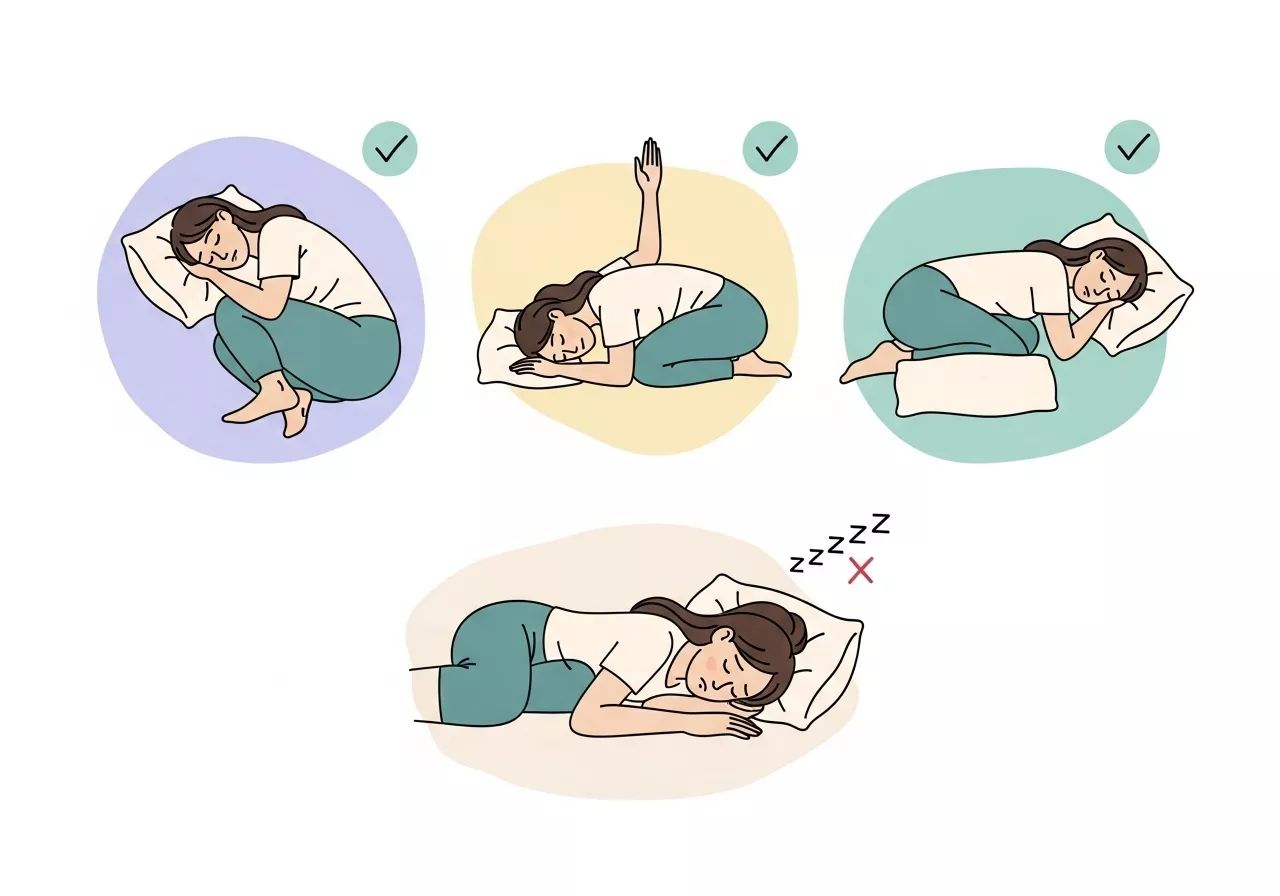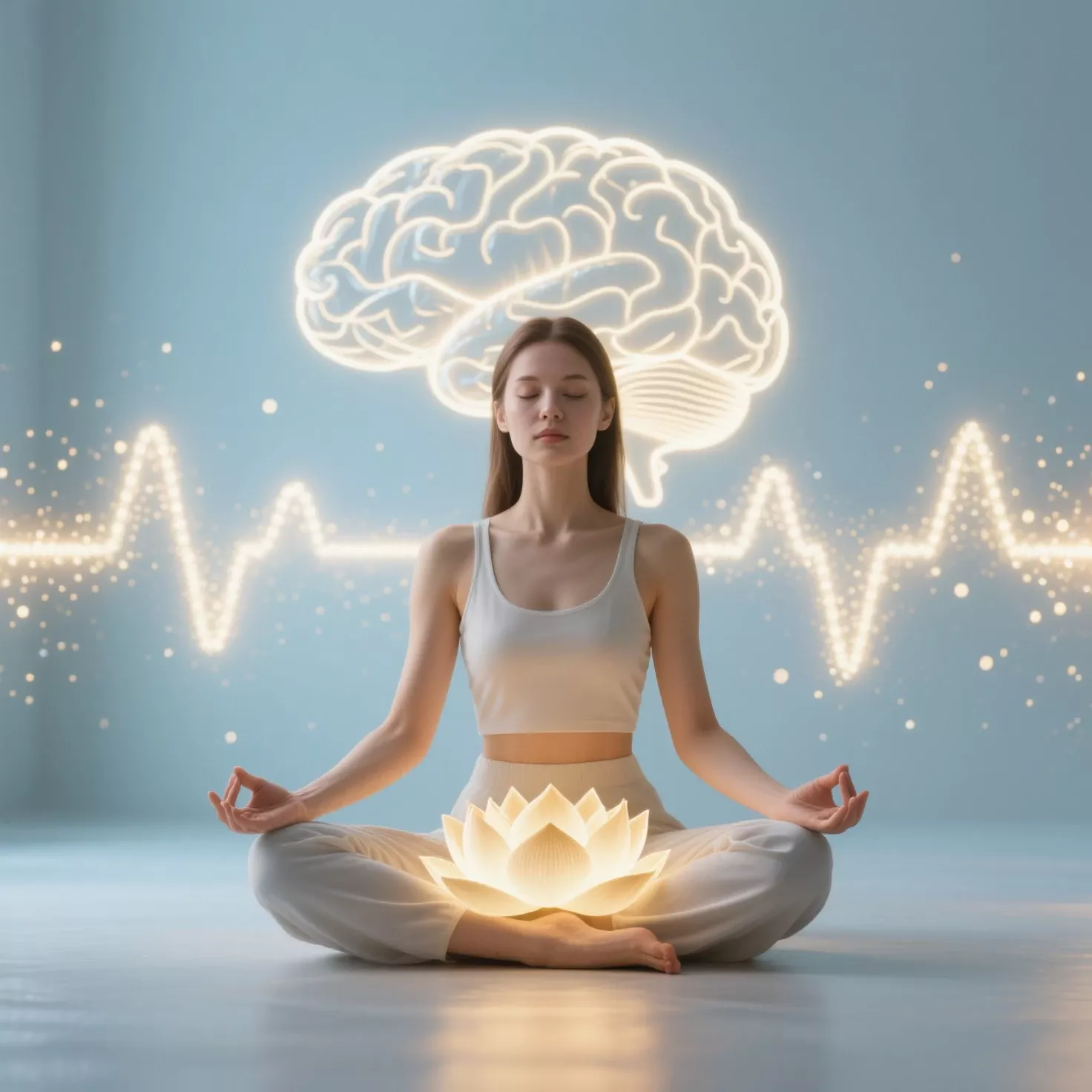Yoga is more than just physical exercise; it’s an art that encompasses movement, postures, alignment, breathing, connection, and meditation.
By engaging in yoga, you can enhance your life quality, foster self-awareness, and cultivate mindfulness and intentionality.
This practice deepens your intuition by connecting various aspects of your mind and body.
As Beachbody Yoga Expert Elise Joan states, “Yoga is the ultimate practice. It simultaneously stimulates our inner light and quiets our overactive minds.
It is both energy and rest. Yin and Yang. We feel the burn and find our bliss.”
Approaching yoga with enthusiasm and a willingness to participate is all that’s needed to begin reaping its benefits.

Here are five key benefits of yoga for your mind, body, and soul
1. Calms the Mind’s Racing Thoughts
Yoga and meditation are renowned for their ability to quiet an overactive mind. In today’s fast-paced world, the constant flow of thoughts can lead to stress, anxiety, and difficulty concentrating.
Yoga offers a sanctuary to pause and redirect your mental energy, helping to break the cycle of intrusive thoughts.

Through a combination of mindful breathing, intentional movement, and meditative practices, yoga activates the parasympathetic nervous system, which signals your body to relax and let go of tension.
Breathing techniques, or pranayama, are particularly effective in calming the mind. Practices such as deep belly breathing or alternate nostril breathing help reduce the stress hormone cortisol and regulate your emotional state.
By slowing your breath and focusing on its rhythm, you gently guide your mind away from distractions and towards a state of clarity.
Certain yoga poses, like child’s pose (Balasana) or legs-up-the-wall pose (Viparita Karani), further promote relaxation by grounding your body and soothing the nervous system.
These poses encourage a sense of security and calm, making it easier to release mental clutter.
Meditative elements of yoga also enhance mindfulness, teaching you to observe your thoughts without judgment.
Over time, this practice strengthens your ability to focus on the present moment, fostering a sense of inner peace that can extend beyond the mat and into your daily life.
By regularly engaging in yoga, you cultivate a mental discipline that allows you to manage stress more effectively, replacing chaotic mental chatter with a serene, focused mind.
2. Enhances Strength and Flexibility
One of yoga’s most notable benefits is its ability to build strength and increase flexibility simultaneously, making it a unique practice that caters to both aspects of physical fitness.
Unlike high-impact exercises that may target specific muscle groups, yoga engages the entire body, using your own weight as resistance to develop functional strength and stability.
Yoga’s deliberate poses, or asanas, are designed to stretch and lengthen muscles while building endurance.

For instance, poses like Downward Dog (Adho Mukha Svanasana) and Warrior II (Virabhadrasana II) engage multiple muscle groups, promoting balance, coordination, and resilience.
As you hold these poses, micro-tears form in muscle fibers, which heal over time, leading to greater strength and toning.
Flexibility, on the other hand, is cultivated through sustained stretching and consistent practice. Tight hamstrings, stiff shoulders, or an inflexible back can limit movement and increase the risk of injury.
Poses like Forward Fold (Uttanasana) or Seated Forward Bend (Paschimottanasana) gently loosen tight muscles and connective tissue, improving your range of motion and relieving tension.
Yoga also strengthens the deeper stabilizing muscles that support your joints, enhancing your overall posture and alignment.
Core-focused poses, such as Plank (Phalakasana) or Boat Pose (Navasana), not only strengthen abdominal muscles but also protect your spine and improve balance.

Moreover, the mind-body connection fostered through yoga enhances proprioception—your ability to sense your body’s position and movement.
This heightened awareness helps you identify areas of tension or imbalance, enabling you to address them proactively.
Over time, yoga creates a balanced blend of strength and flexibility, allowing you to move with greater ease, reduce aches and pains, and feel more energized in daily activities.
Unlike traditional workouts, yoga is adaptable to all fitness levels, making it an ideal practice for anyone looking to achieve a strong, supple, and harmonious body.
3. Mitigates Negative Emotions
Yoga is a powerful tool for managing negative emotions such as stress, anxiety, and sadness. These emotions often arise from unprocessed experiences, overthinking, or energy imbalances within the body.

By integrating breathwork, movement, and mindfulness, yoga provides a holistic approach to processing and releasing these emotions, promoting a more positive outlook.
Stress and anxiety are among the most common emotional challenges people face. When stressed, the body activates its “fight or flight” response, flooding the system with adrenaline and cortisol.
Yoga counteracts this by activating the parasympathetic nervous system, which encourages relaxation and lowers stress hormone levels.

Poses like Child’s Pose (Balasana) or Corpse Pose (Savasana), combined with deep breathing, create a state of calm and help the body reset.
Mindful breathing techniques, such as alternate nostril breathing (Nadi Shodhana) or Ujjayi breath, are particularly effective in soothing the mind.
These techniques not only regulate your nervous system but also create a meditative state that allows you to acknowledge and process difficult emotions without being overwhelmed by them.
Yoga also helps release pent-up energy and tension stored in the body. Emotional stress often manifests physically, creating tightness in areas like the shoulders, hips, or lower back.
Heart-opening poses like Camel Pose (Ustrasana) or hip stretches like Pigeon Pose (Eka Pada Rajakapotasana) help release this tension, encouraging emotional release and healing.
Additionally, yoga stimulates the release of “feel-good” hormones such as dopamine, serotonin, and endorphins.

These natural mood enhancers help counteract feelings of sadness and depression, promoting a sense of joy and contentment.
Regular practice can create a positive feedback loop, as the emotional relief yoga provides encourages consistency in the practice.
Beyond immediate relief, yoga cultivates a mindset of mindfulness and self-awareness.
Over time, this helps you become more resilient in handling life’s challenges, enabling you to recognize and manage negative emotions more effectively.
By fostering this emotional equilibrium, yoga becomes not just an exercise but a lifelong tool for emotional well-being.
4. Cultivates Gratitude
Yoga naturally fosters a sense of gratitude by encouraging mindfulness and helping you connect with the present moment.
In a world often dominated by distractions and stress, yoga offers a pause—a chance to reflect on the positives in life and develop a deeper appreciation for them.
At its core, yoga emphasizes living in the now. Through the deliberate combination of breath, movement, and meditation, you are guided to shift your focus from what is lacking in your life to what you already have.

This perspective nurtures gratitude, enabling you to acknowledge and cherish even the smallest blessings, such as the ability to move, breathe, and simply be.
Specific yoga practices are particularly effective in cultivating gratitude. Heart-opening poses like Cobra Pose (Bhujangasana), Upward Salute (Urdhva Hastasana), and Bridge Pose (Setu Bandhasana) symbolically and physically open your chest, creating a sense of expansion and receptivity.
These poses align with the heart chakra, which is believed to govern feelings of love, compassion, and gratitude in many yoga traditions.
Mindful breathing techniques, such as Anulom Vilom (alternate nostril breathing) or three-part breath (Dirga Pranayama), enhance your connection to the moment.
By focusing on each inhale and exhale, you become more attuned to the gift of life itself—a simple but profound realization that fosters gratitude.
Meditative practices in yoga further deepen this sense of appreciation. Gratitude meditations often involve silently reflecting on the people, experiences, or aspects of your life that bring you joy and meaning.

As you practice, this mindset becomes second nature, gradually shifting your focus from what you wish to change to what you are thankful for.
Yoga also helps clear emotional and mental energy blockages that can prevent feelings of gratitude.
Whether it’s through flowing sequences like Sun Salutations (Surya Namaskar) or restorative poses that encourage stillness, yoga helps you release negativity and make room for positivity and thankfulness to flourish.
Over time, this consistent practice of gratitude transforms your outlook, making you more resilient and optimistic.
It fosters a sense of inner abundance, reminding you that contentment isn’t about external achievements but about recognizing and valuing the beauty in your everyday life.
5. Equips You to Handle Life’s Challenges
Life is full of challenges—ranging from minor frustrations to major life-altering events. Yoga equips you with tools to navigate these obstacles with greater resilience and grace, transforming the way you respond to stress and adversity.

By integrating mindfulness, physical movement, and emotional awareness, yoga becomes a practice of inner fortitude that extends far beyond the mat.
One of the primary ways yoga prepares you for challenges is by cultivating mindfulness. Through breathwork (pranayama) and meditation, yoga teaches you to focus on the present moment, reducing the tendency to dwell on past regrets or future worries.
This practice of staying grounded allows you to approach problems with clarity and calm rather than being overwhelmed by emotional reactions.
Physically, yoga conditions your body to handle stress and tension, which often manifest during challenging times.

Poses like Warrior I and II (Virabhadrasana I and II) are not just about strength—they symbolize perseverance and readiness, encouraging you to embody a mindset of courage and determination.
Balancing poses, such as Tree Pose (Vrikshasana), train you to find stability amidst chaos, reflecting the importance of composure in turbulent situations.
Emotionally, yoga creates space for self-reflection and acceptance. During difficult times, it’s common to feel stuck or resistant to change.
Yoga helps release these emotional blockages by encouraging a nonjudgmental awareness of your feelings.

Gentle flows and restorative poses, such as Reclined Bound Angle Pose (Supta Baddha Konasana), support this process by creating a safe space for emotional processing and healing.
Yoga also enhances your ability to adapt to change. Just as you adapt your body to flow from one pose to another, you learn to embrace life’s unpredictability.
Breathwork, like Ujjayi breathing, serves as a steadying force, teaching you to remain calm and focused even when external circumstances are beyond your control.
Additionally, yoga strengthens your problem-solving skills by training you to slow down and approach situations methodically.
The practice requires you to observe your body’s alignment and limitations without judgment, a principle that translates to real-life challenges.
Instead of reacting impulsively, you learn to assess situations with patience and respond with thoughtfulness.
While yoga doesn’t eliminate life’s challenges, it shifts your perspective and enhances your ability to face them.
It fosters a sense of self-awareness, resilience, and inner peace that helps you navigate difficulties with a clearer mind and a stronger spirit.
Over time, you become better equipped to turn challenges into opportunities for growth and self-discovery.
Incorporating yoga into your routine offers numerous benefits for your mind, body, and soul, promoting overall well-being and resilience.



